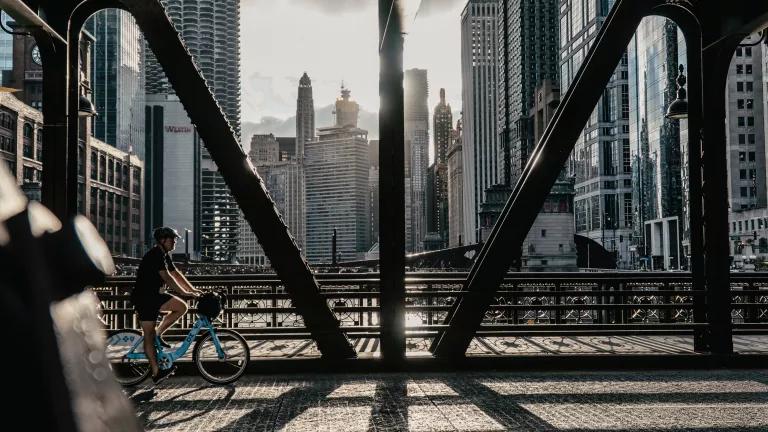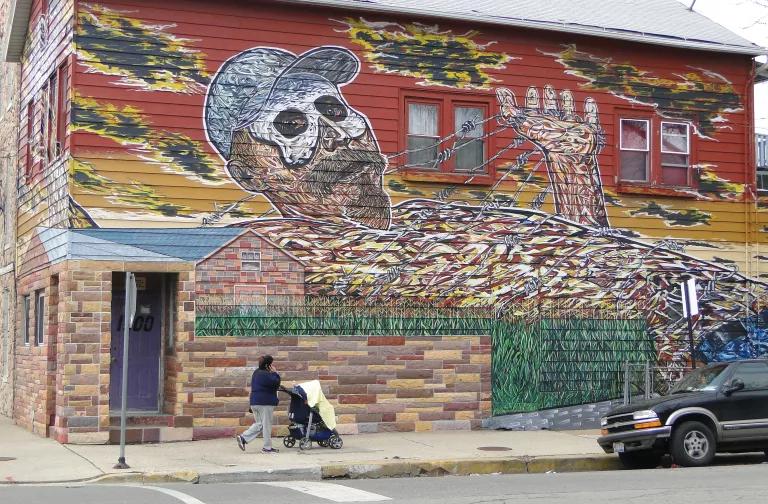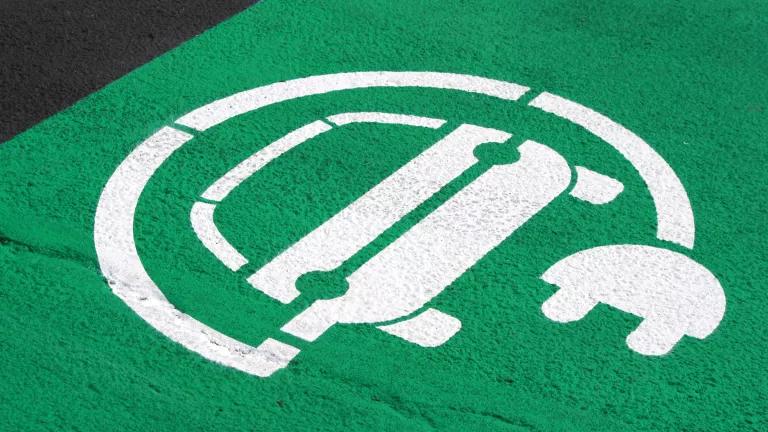Illinois Must Invest in Transportation Options for All
The infusion of $10 billion in federal funds presents an opportunity to either double down on a dirty, unfair status quo—or choose a new transportation future.

Karl Solano via Pexels, CC BY 4.0
Illinois is set to receive more than $10 billion in federal funding for our transportation system from the Infrastructure Investment and Jobs Act (IIJA) and the Inflation Reduction Act (IRA).
This historic influx of money presents both an opportunity and a threat: We can either make investments to lock in a dirty and unfair status quo for another generation, or we can design a cleaner, safer transportation system that takes everyone into account, including those who can’t get to the grocery store or doctor with a car, like those with disabilities and seniors.
The costs of our current transportation are intolerably high and affect many areas of our lives:
- Our roads are not designed for safety. Fatalities from motor vehicle crashes are a national crisis, and Illinois is no exception, with the number of people dying on roads having risen more than a third from a decade ago. In Chicago, organizers have been calling for safety improvements to prevent future crashes like those that took the lives of pedestrians and cyclists, including 11-year-old Ja’lon James, two-year-old Raphael “Rafi” Cardenas, 41-year-old Gerardo Marciales, and three-year-old Elizabeth “Lily” Grace Shambrook.
- Air pollution from cars and trucks harms our health, contributing to asthma, cardiovascular disease, and premature death. Pollution from diesel vehicles alone will kill an estimated 416 people in Illinois this year, in addition to the health harms of pollution from passenger vehicles. These impacts are racially disparate, with Black, Latino, and Asian people in Illinois exposed to 20 to 30 percent more vehicle pollution than white people. Historically, roads—highways in particular—were constructed in ways that segregated and harmed communities of color, and those harms persist today in the form of increased pollution exposure and other injustices.
- Car ownership is a financial burden, especially for people with low incomes. The average annual cost of owning and operating an automobile was $10,729 in 2022, up 20 percent in the last decade. At this cost, the average household in Illinois would spend more than one in every seven dollars of its income on a car, and a low-income family would spend more than one-third of its income on a car. Households with incomes below $25,000 per year are nine times more likely not to own a car, meaning that people with low incomes suffer vastly disproportionate harm from our lack of transportation choices.
- Vital services are inaccessible to many Illinoisans. By improving transit and designing our streets in a smarter and safer way, we can ensure that everyone—including those who can’t get around without a car, like those with disabilities and seniors—can get to the vital places they need to be, like the doctor’s office or grocery store.
- The transportation sector is the largest driver of climate change in Illinois, generating one-third of our state’s carbon pollution. In sharp contrast to Illinois’s recent progress in reducing emissions from the power sector, vehicle miles traveled and emissions from the transportation sector have held steady or increased in recent years. Governor JB Pritzker issued an executive order to “fulfill, uphold, and exceed the objectives of the Paris Climate Agreement,” rightly committing Illinois to doing its part to avoid catastrophic climate change. Electric vehicle adoption is key to meeting this goal, but it is not possible to meet our state’s climate goals with electric vehicles alone. It will require providing more and better options for transportation and reducing vehicle miles traveled by 20 percent by 2030, in addition to the ambitious adoption of electric vehicles.

Woman with stroller walks under mural by Hector Duarte
Adam Jones via Flickr, CC BY 4.0
Our transportation system as it exists today provides little choice beyond driving cars, leaving behind many of Illinois’s most vulnerable people and harming our climate and our health.
The federal dollars now flowing into our state create a once-in-a-generation opportunity to modernize Illinois’s transportation system so that every Illinoisan has the ability to safely, affordably, and conveniently take public transit, or to walk, bike, or roll wherever they want to go.




